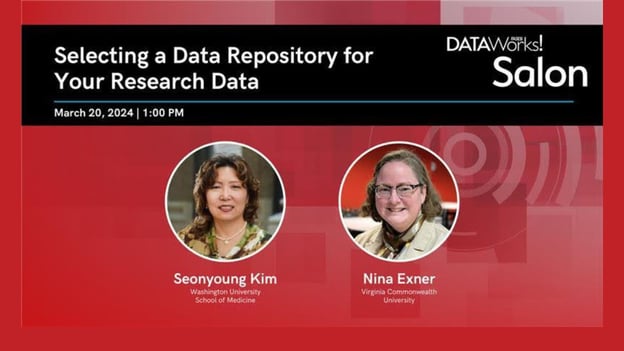Now that the FASEB DataWorks! Help Desk has been available for a few months, we thought it would be a good time to highlight our most popular guides (so far!), based on the number of views. If there is a guide you would like to see that is not yet available in our Knowledge Base, please get in touch and share your request.
1. A Guide to Choosing a Data Repository for NIH-Funded Research
This guide outlines how to choose a data repository when writing a National Institutes of Health (NIH) grant application. Most grant recipients share their data in a data repository, which is a tool to share, preserve, and discover datasets, usually accessed via a web portal. In this article, we cover the definition of data repositories, their benefits, and the types of repositories before moving into how to select a data repository according to NIH rules.
2. Budgeting: Estimating Costs for Data Management and Sharing Plans
This guide outlines how to write a budget for data management and sharing (DMS) costs for an NIH grant application. Our guide stresses that DMS costs will almost never be zero, so principal investigators (PIs) should plan to include this new section in their budget. In this article, we outline allowable and unallowable costs, the application process for DMS budgets in NIH grants, and the recent update to NIH DMS budget policy.
3. Sample NIH Data Management and Sharing Plans
While your DMS Plan should be specific to your research project, sample DMS Plans provide a sense of what others have included in their plans. In this article, we provide links to all the sample DMS plans released by the NIH, as well as other sources for sample plans PIs can use.
4. Overview of 2023 NIH Data Management and Sharing Policy
This article will introduce you to the 2023 NIH Data Management and Sharing Policy (DMS Policy). You will learn what is covered under the new policy, what has changed, how to submit your DMS Plan, and how your submission will be judged by the NIH. After reading this guide, you can jump into our articles on each individual element required in a DMS Plan.
A data availability statement (DAS) details where the data used in a published paper can be found and how it can be accessed. These statements are increasingly required by publishers. In this guide, we outline how to find DAS's in published articles and provide some templates for writing your DAS in common situations.
In addition to these articles, we have many other guides available at the FASEB DataWorks! Help Desk.




